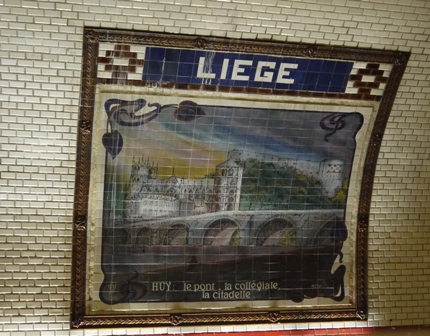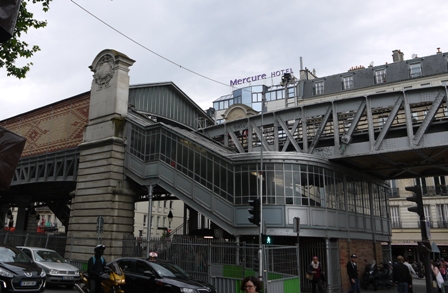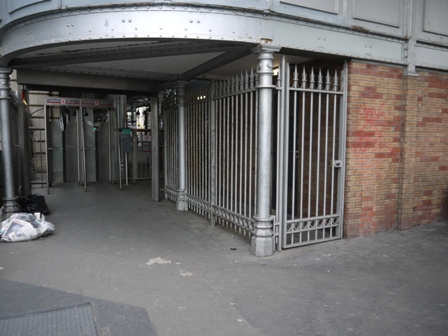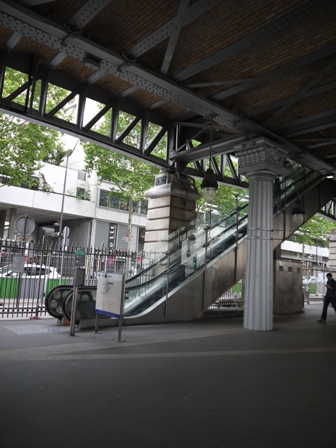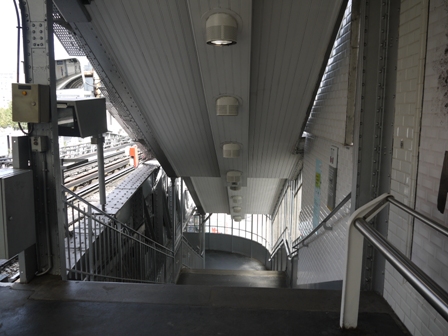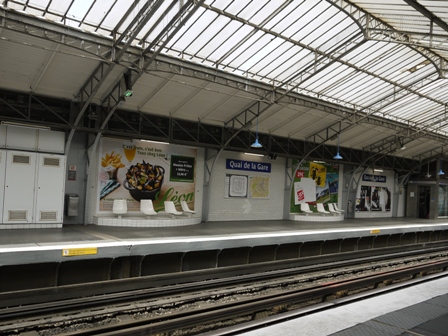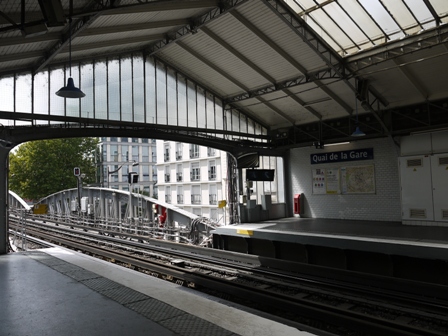The station opened on 1 March 1909 as part of the original section from Place d'Italie to Nation, which was operated by CMP.
The station is situated in the 13th arrondissement, on the quai de la Gare on the left bank of the Seine. It is named after the gare d'eau, which was built in the 18th century to allow boats to anchor.
It is served by the metro line 6. The elevated station has one ground-level access.
The station is fenced in with a grey high metal fence.
The stairway is painted silver with glass-panels.
Exit from the station is through metal swing doors.
As is typical for most French metro stations, escalators only go upwards.
The platforms are built on a metal bridge, filled with yellow bricks. They are supported by stone pillars on the parameter and silver painted metal pillars inside the parameters.
Stairs from the ground to the platform level.To go go down to ground level you have to take the stairs.
Lighting is provided by barrel-shaped spotlights fixed to a centre bar on a wooden, slatted ceiling. There are hand-rails on either side.
North-east-bound platform with white plastic seats arranged on low circular bases covered in white ceramic tiles.
The advertising behind the seating areas is placed in frames made from white ceramic tiles with a rim.
Small lamps with medium blue metal lampshades hang from the lower parts of the ceiling.
West-bound exit of the tracks towards Chevaleret. The frosted glass panels are plain.
The platform edges are painted white. They also have a band of knobbed tiles to mark the edge for sight-impaired passengers.
Access to the centre of the platform is also by a narrow escalator. Behind it, at the end of the platform is the stair access.
The apex part of the ceiling is covered in frosted glass panels. The lower parts are solid metal or wood and painted. The entire structure is supported by simple criss-cross metal beams painted in grey.
The line traverses the Seine over the Pont de Bercy.

